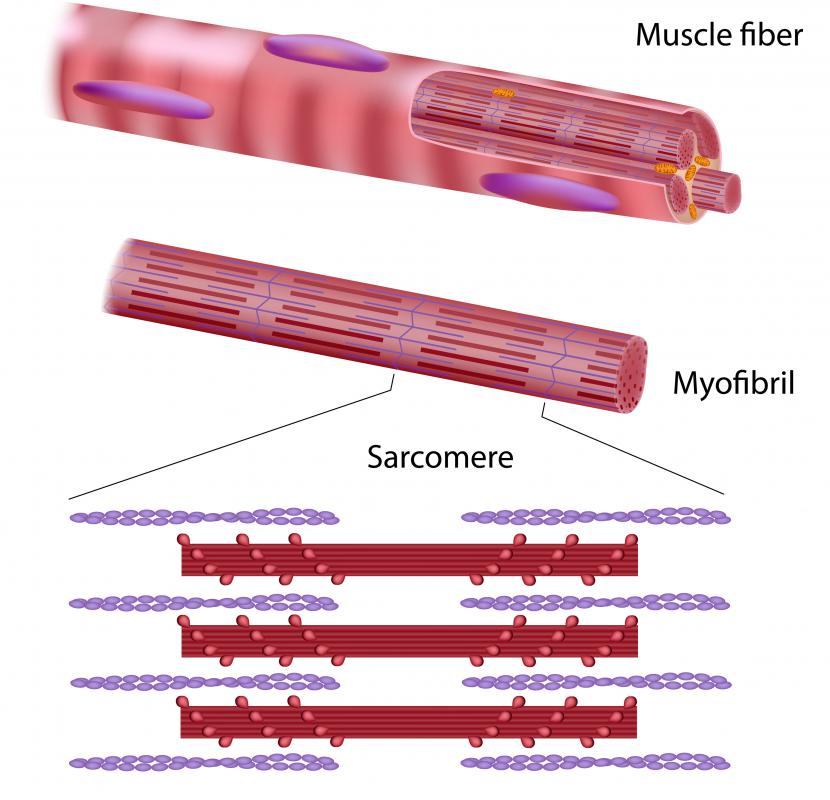At TheHealthBoard, we're committed to delivering accurate, trustworthy information. Our expert-authored content is rigorously fact-checked and sourced from credible authorities. Discover how we uphold the highest standards in providing you with reliable knowledge.
What is Muscle Fiber?
Muscle fiber is the term used to collectively describe the many long, multi-nucelated muscle cells, or myofibers, that make up skeletal muscle. Individual fibers are arranged into bundles — termed fascicles — that are then further organized into groups of fascicles, which form the muscle belly. Each level of organization is sheathed in a membrane of connective tissue and is serviced by blood vessels, lymph vessels, and nerves. The individual long cells themselves are often classified as either fast twitch or slow twitch fibers, and most people usually have a predominance of one type, based on both genetics and activity level.
Slow twitch muscle fibers are generally associated with long duration, low intensity activities. This type is used both for endurance sports, such as marathon running, but also in the daily stability activities of core muscles and similar groups of fibers. Slow twitch fibers generally produce usable energy by way of a method known as oxidative phosphorylation, a highly efficient system that consumes high levels of oxygen. As a result, they are well-serviced by blood vessels and rich in mitochondia and myoglobin, an oxygen-binding protein similar to hemoglobin. The high concentration of the red-hued myoglobin proteins are responsible for the general term red fibers being used to describe them.

Fast twitch fiber is normally associated with short, powerful bursts of energy and rapid fatigue. Power lifters, sprinters, and similar athletes tend to develop high proportions of fast twitch muscle fibers. This type of fiber can utilize either oxidative phosphorylation, or the less efficient, but faster glycolysis to liberate energy from nutrient molecules. Most contain high levels of stored glycogen to power glycolysis, but have a lower level of mitochondria and myoglobin, as well as a smaller capillary supply. This often leads to the cells having a lighter color than slow twitch fibers, earning them the name white fibers.

In humans, both types are usually interspersed within a single muscle, with greater or lesser proportions of each depending on genetic pre-disposition and the function of the muscle. In bird species, however, there is a more orderly division of fiber types. The characteristic white and dark meat in poultry, for example, are representative of the different fiber types within the bird.

Athletes looking to build muscle usually tailor their workouts depending on the type of muscle fiber they want to develop. Endurance athletes will typically perform high numbers of repetitions using low resistance to develop the slow twitch fibers, while power athletes and body builders will usually use higher weights for shorter sets, to develop fast twitch fibers. While genetic potential may play a role in fiber distribution, there is a certain amount of plasticity in the ability of muscles to shift roles in response to imposed exercise demand.
AS FEATURED ON:
AS FEATURED ON:















Discuss this Article
Post your comments